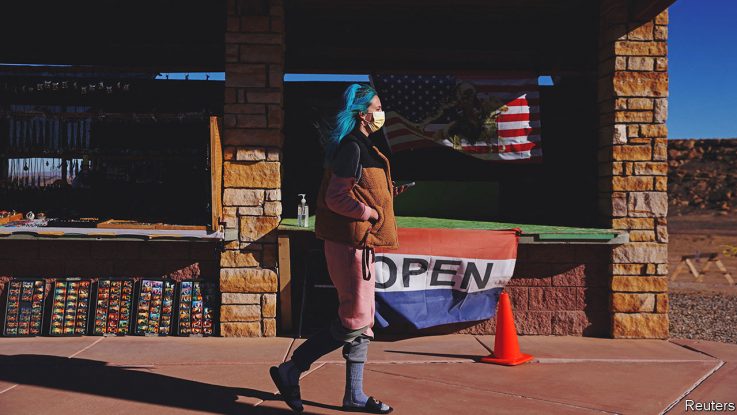
Despite the obvious risks, nurses from all over America flocked to New York when the city was first afflicted by covid in 2020. As the various waves washed over America, the need for travel nurses grew as other states were hit hard too. Demand for travelling nurses has dipped a bit since, but it remains much higher than it was before the pandemic. Spending on travel nurses is five times what it was in 2019.
Your browser does not support the <audio> element.
Listen to this story
Save time by listening to our audio articles as you multitask
According to the American Hospital Association, hospitals spent a median of 40% of their nurse-labour expenses on travel nurses in January 2022, compared with just 5% in January 2019. Barry Asin of Staffing Industry Analysts says the travel nurse increase is the biggest change in staffing he has seen in his two decades of research. The future of travel nurses is one of the biggest questions the health industry is facing says John August, director of healthcare labour relations at Cornell’s School of Industrial and Labour Relations. It is also a wonderful opportunity for nurses with wheels.
Travel nurses are paid much more than staff nurses doing the same job at the same hospital, to offset the inconvenience of leaving home. Nora Cruz, for instance, is based in Florida, but is currently working in Iowa. The entire medical facility there is manned by travellers, she says. Before covid, many adventurous types were drawn to travel nursing, happy to stay a few weeks or months in a different city or state and move on. One intensive care nurse interviewed for this story likes to work in Denver hospitals in the winter so he can ski.
The pandemic changed things. Wages rose, in part to compensate for conditions that were suddenly more hazardous. Thanks in part to federal covid relief funding, travel-nurse staffing agencies increased the hourly rates they charged to hospitals by more than 200%. At peak demand, some travel nurses earned as much as $10,000 a week. Wages have come down since then, but they are still high. According to Vivian Health, the average weekly salary for a travel nurse in South Dakota is nearly three times higher than the staff nurse’s average weekly salary of $1,164.
But within the set of travelling nurses, there is a hard-boiled subset that makes even more money. About 100,000 nurses left bedside care in 2021. Burnt out from the punishing nature of covid-care, many staff nurses retired. Others opted for less stressful jobs, such as a school nurse or working for insurance companies. Nurses still on the job are fed up. They felt underappreciated by hospitals. Tony Braswell, head of Gale, a staffing agency, says they are not just burnt out, they are broken. They have been frustrated by pay as well as increasing patient nurse-ratios.
As a result, earlier this month 7,000 nurses in two New York City hospitals went on strike for three days. Darla Joiner, a nurse who served on the union grievance committee, says she nearly became a travel nurse last year, after six of her colleagues resigned. Before the strike, she said to herself, “I’m just so upset right now I can’t keep working like this. We’ve been working very understaffed for a long time.” This too creates an opportunity. Enter the strike nurses, who are among the best paid, making thousands of dollars a day.
Ms Cruz, in Iowa via Florida, became a travel nurse last year. She was drawn to the flexibility as well as the money. She likes to have control of her schedule. But she has four children under five that she leaves behind in Florida. Finding accommodation for short stints is not easy either. Sometimes landlords jack up the rent when they find out she is a travel nurse. She mostly lives in an RV when she is on assignment.
More hospitals, feeling labour costs pinch, are outsourcing recruitment and payroll. The staffing agencies, meanwhile, are getting savvier with technology. Aya Healthcare has created an Uber-like platform for nurses and hospitals to connect footloose workers with work. Tech staffing firms have also started to place travel nurses. Nursing, in other words, is becoming part of the gig economy.■
Stay on top of American politics with Checks and Balance, our weekly subscriber-only newsletter, which examines the state of American democracy and the issues that matter to voters.



